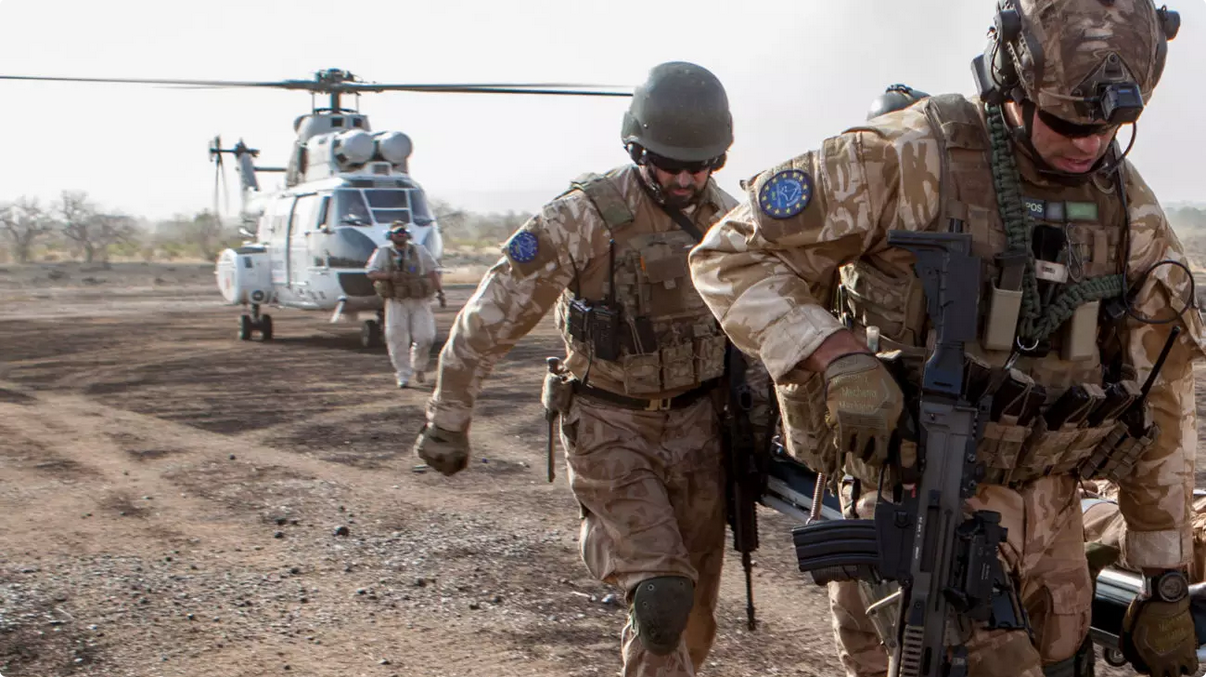Shocking images of the historically unprecedented Afghanistan airlift caught the attention of people around the world. It also caught the attention of European Commission President Von der Leyen in her State of the Union address, the EU’s High Representative for Foreign Affairs and European Commission Vice-President (HRVP) Josep Borrell, and European Council President Charles Michel, who have all seized the moment to give renewed impetus to the idea of establishing an ‘Initial Entry Force’ (IEF). First floated in May 2021 within the scope of Strategic Compass preparations being made by 14 member states including France, Germany and Italy, the idea would be to upgrade the EU Battlegroup (EUBG) concept so that the EU could become more responsive to crises. Yet, the experience of 15 years of EUBG non-deployment should dissuade HRVP Borrell and defence optimists from believing that an IEF is a quick and easy fix to square the EU’s rapid response force circle.
While an IEF might push forward the goalposts of reaching the EU’s Common Security and Defence Policy (CSDP) level of ambition in an ideal world, reality sadly points in another direction. In short, solving the current challenges underlying EUBG deployment is a necessary precondition before the IEF can become a real success story. The HRVP, as well as the Council and Commission’s leadership, should seek tangible synergies within the larger European Defence Union framework to ensure that future rapid response forces are interoperable, capable and, most importantly, an attractive choice for EU member states.
A mistaken order of operations
The hurried withdrawal of coalition forces from Afghanistan was due to both a lack of foresight/preparedness (with the sole exception of France) and the EU’s inability to activate rapid response forces to protect its own citizens sans US support. But the IEF is not the rapid response silver bullet proponents have purported it to be. In fact, a 5,000-strong IEF on permanent standby would not solve the two key problems linked with the EUBGs: chiefly, who foots the bill and treaty-based unanimous decision-making requirements, resulting in insufficient political willpower.[i]
In comments following an informal meeting of EU Defence Ministers on 2 September 2021 and despite these challenges, the HRVP optimistically stated that a hypothetical IEF would: 1) support the EU’s capacity to respond in times of crisis (i.e., by providing a security perimeter such as in Operation Artemis), 2) strengthen the EU’s military command and control (C2) capabilities and 3) address capabilities shortfalls through initiatives such as the Permanent Structured Cooperation (PESCO) project and the European Defence Fund.
While the fuzzily defined IEF and the current 1,500-strong EUBGs might have been useful in securing the area around Kabul Airport, the lack of foresight, weak military C2, and capabilities shortfalls – all factors driving a weak CSDP – remain outside the remit of such a proposal. Despite the 2017 establishment of an EU military operational HQ (the Military Planning and Conduct Capability), the need to overcome member state resistance linked to divergent strategic cultures and lack of interoperability would persist even with the creation of the IEF. This would lead to futile trial-and-error and, potentially, a repeat of political fatigue. Indeed, political opposition to the IEF concept has already emerged, with some member states (i.e., Sweden and Germany) preferring NATO or EU ‘coalitions of the willing’ to the proposed IEF. This chimes with a trend in longer CSDP missions as well, typically understaffed, under-resourced and often dependent on the support of NATO and/or national operations.
Finally, to believe that creating the IEF would itself miraculously address capabilities shortfalls through the undefined involvement of PESCO and the EDF is an exercise in putting the cart before the horse. Rather than creating a new rapid response force to accelerate strategic culture convergence, remedy barriers to interoperability and fill capabilities gaps, the High Representative, Commission and Council should consider inverting the order of operations. In other words, an effective EU IEF depends first on solving the root problems that have plagued the EUBGs – within current Treaty constraints – rather than precipitously creating new force structures to replace them.
Objective IEF: Gradual upgrading and upscaling
Taking gradual but deliberate steps towards the IEF is key. It would first make sense to expand the membership of each EUBG and prolong their standby duration to foster greater interoperability among member states that differ in capabilities, strategic culture and readiness. Yet, while President Von der Leyen proposed some ways of strengthening the budding European Defence Union in her State of the Union address, she did not address how to ensure that the EU actually deploys its rapid reaction forces.
One way of doing so is through the tried-and-true incentive-based ‘spillover’ approach. Recent developments in European defence cooperation can provide food for thought on how to break the coming impasse and chart a path to ensuring the viability of EUBGs and, eventually, the IEF. The announcement that France and Germany have officially launched a joint tactical air transport squadron and training centre is an experience that can be replicated amongst like-minded member states. These bilateral forms of defence cooperation are rightly considered within the larger patchwork of differentiated integration in CSDP.
If there is genuine interest in strengthening the EU’s crisis response capacity, however, EU member states should first integrate these separate endeavours into the European Defence Union via PESCO. One way to incentivise such convergence might be by providing an additional European Defence Fund (EDF) co-financing bonus to those capabilities-oriented PESCO projects that are subsequently operationalised on a collective basis.
With the right incentives, France and Germany might consider bringing a third PESCO member state into the joint squadron and training centre, thereby promoting strategic culture convergence, facilitating future interoperability and building EU capabilities. Going even further back in the development cycle, an added EDF joint operation bonus might even convince France, Germany and Spain to incorporate the Future Combat Air System – currently in preliminary development – within PESCO and, subsequently, jointly man and operate the system.
Through such a method, the EUBGs would ideally operate some collectively developed capabilities together – encouraging the EU to deploy them for rapid response missions when the time and necessity comes.
Conclusions
The proposed IEF currently under member state consideration would not have been deployed (in time) to support the West’s retreat from Afghanistan. Nor would the IEF solve the root problems underlying the effective deployment of EU military forces and subsequently help make the EU a more capable global actor in the future. Instead, jointly developing capabilities for collective use in the framework of PESCO’s more binding commitments is the key to filling capabilities gaps and overcoming barriers to interoperability.
The envisioned end result is potentially transformative for CSDP. By incentivising continual cooperation, EU member states would simultaneously strengthen the European pillar of NATO and could overcome political reticence. They could also find solutions to long-standing strategic and operational differences to deploy the EUBGs or the future IEF – all without needing to revise Treaty provisions on unanimity and funding. Only then might member states be able – and willing – to pool both military personnel and materiel to assertively deploy EU troops for urgent rapid response operations.
[i] The verdict is still out on the European Peace Facility, a €5 billion-endowed merger of the Athena Mechanism and African Peace Facility funding all CSDP activities, including providing lethal military equipment to third actors, on a (now) predictable basis.
Find the original publication here
a


